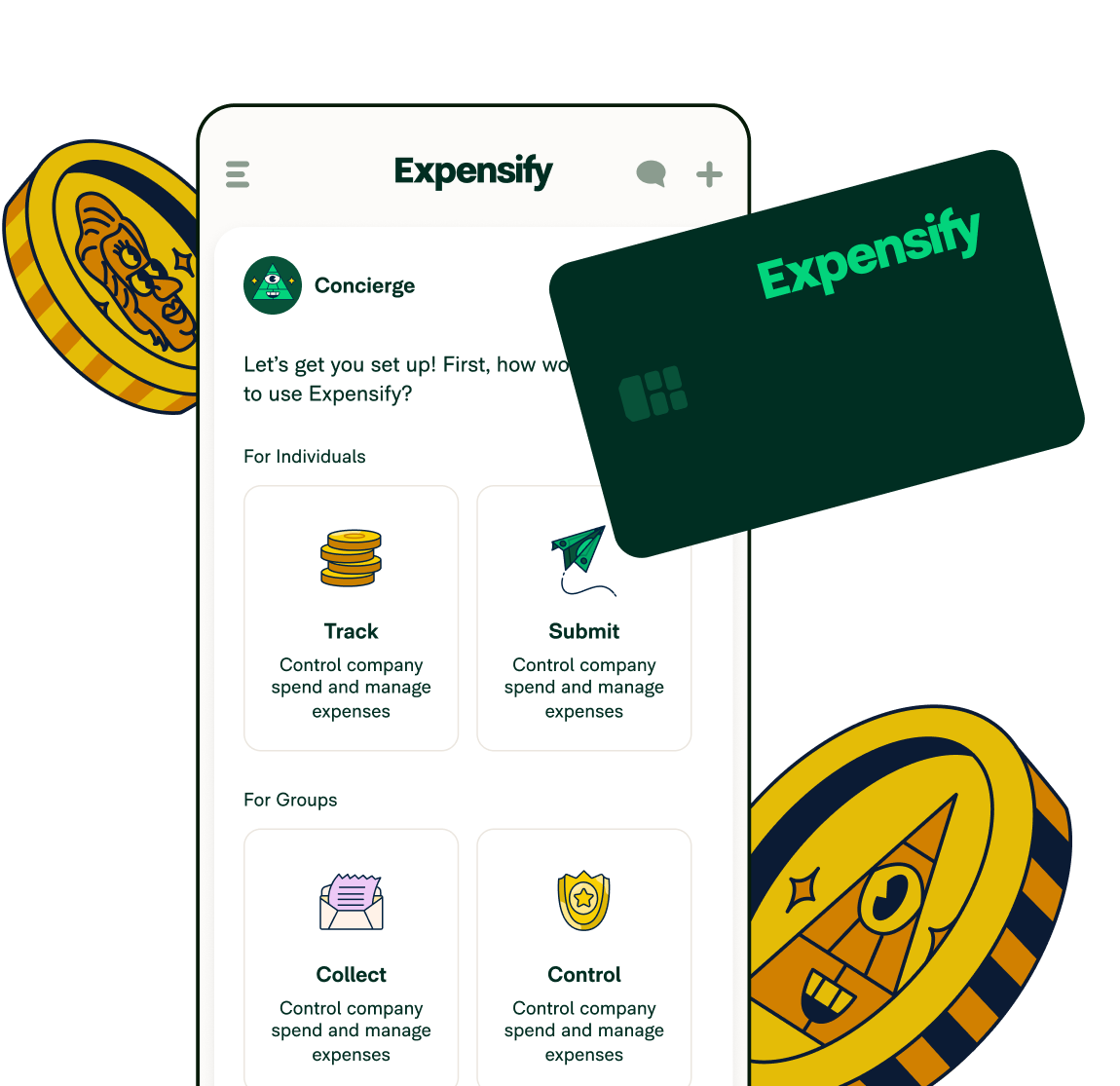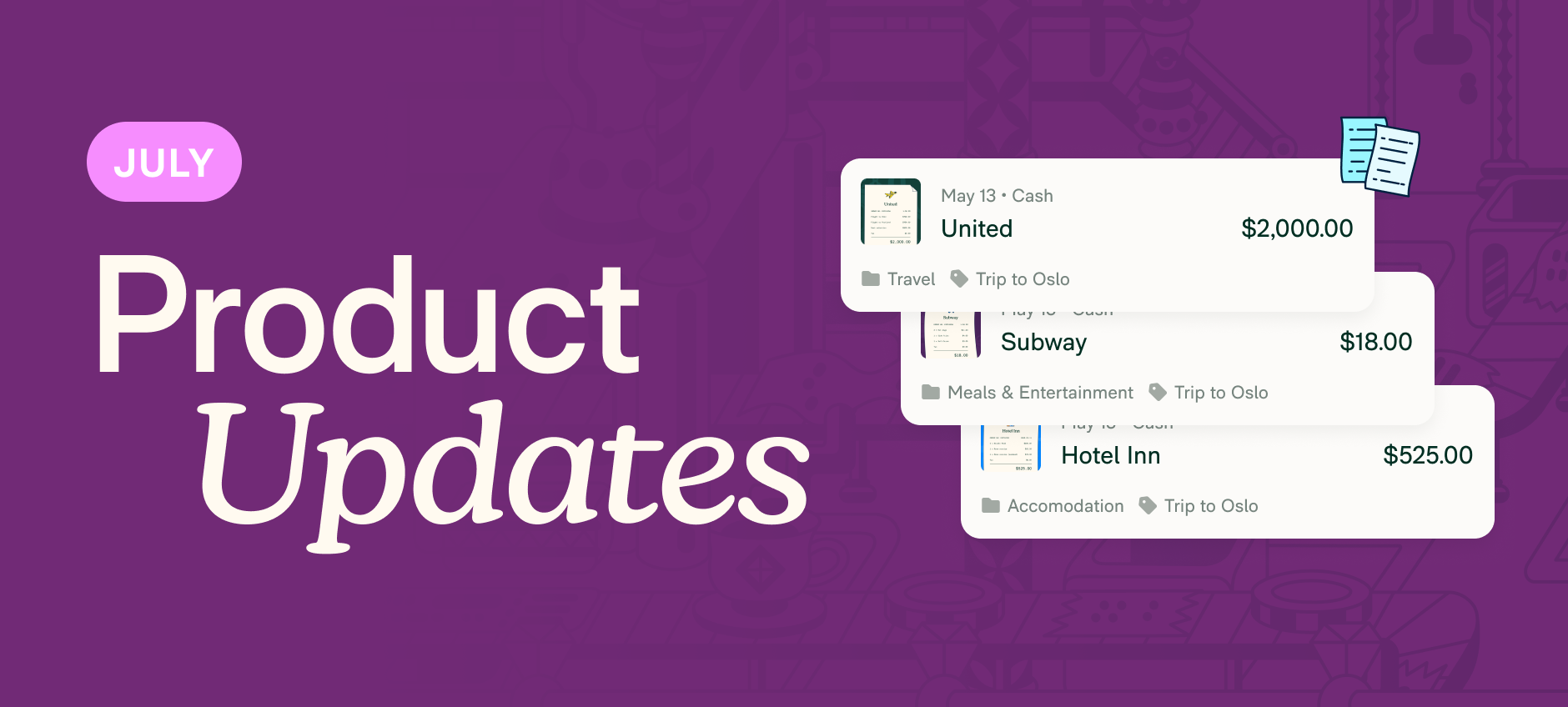How to hire employees for your small business: The ultimate guide

There comes a time in every small business journey when you realize you can't go it alone anymore. Maybe you're drowning in daily tasks, missing out on growth opportunities, or just tired of wearing seventeen different hats. Whatever the reason, hiring your first employee represents a pivotal moment that can make or break your business future.
Here's the thing: smart hiring planning becomes crucial for long-term success – especially when 82% of small businesses fail due to cash flow problems. Poor financial preparation during the hiring process can quickly transform that exciting "we're growing!" milestone into a "how are we going to make payroll?" crisis.
This comprehensive hiring guide covers everything you need to know about how to hire employees for small business success: financial readiness assessment, legal requirements navigation, effective recruitment strategies, and post-hire systems that actually work. No fluff, no generic advice – just the real stuff that matters.
Key takeaways
- Small businesses often underestimate the true cost of hiring, leading to cash flow issues and costly mistakes that can derail growth plans.
- Poor hiring planning leads to expensive turnover and operational disruptions, with bad hires costing up to 30% of an employee's first-year salary.
- Use comprehensive hiring checklists and expense tools to ensure financial readiness before expanding your team.
- The best way to hire employees involves systematic preparation, from EIN acquisition to structured interview processes.
- Expensify's automated expense management streamlines the fastest, easiest financial tracking for growing teams, helping you monitor costs in realtime.
Small business hiring checklist
Before you hire your first employee, this hiring checklist ensures you're prepared for every step:
Assess financial readiness: Calculate true hiring costs (salary + 25-40% for taxes, benefits, overhead) and ensure you have 3-6 months of payroll reserves
Get your EIN: Obtain an Employer Identification Number from the IRS for tax and payroll purposes
Understand legal requirements: Research state employment laws, required posters, and tax obligations
Set up workers' compensation insurance: Get required coverage through a commercial carrier or state program
Define the role clearly: Create a detailed job description with specific responsibilities and success metrics
Choose your recruitment strategy: Select job boards, networking channels, and applicant tracking methods
Prepare structured interviews: Plan multi-stage evaluation, background checks, and reference verification
Set up payroll systems: Choose a payroll provider and establish expense management tools
Create an onboarding plan: Prepare new hire paperwork (W-4, I-9) and first-day orientation process
Financial preparedness: Beyond the basics
Before diving into the employee hiring process, let's talk money. And we mean really talk about it – not the glossed-over version where everything magically works out, but the real numbers that determine whether your hiring adventure becomes a success story or a cautionary tale.
Understanding how to pay employees goes beyond just salary calculations. When small businesses fail to account for the complete cost picture, cash flow problems quickly follow.
Calculate the true cost of hiring employees
Salary represents just the beginning when learning how to hire employees for a small business. Think of salary as the tip of an iceberg – there's a whole lot more lurking beneath the surface that can sink your cash flow if you're not prepared.
Mandatory employer costs include:
Workers' compensation insurance premiums
Required benefits (varies by state and business size)
Hidden costs often overlooked:
Onboarding and training expenses
Software licenses and equipment allocation
Recruitment fees and job posting costs
Office space, utilities, and supplies
Productivity loss during initial training period
Potential turnover and replacement costs
Rule of thumb: Budget 1.25-1.4 times the base salary for total employment costs. That $50,000 salary you're excited about? It's actually going to cost your business $62,500-$70,000 annually when you factor in all the extras. Yeah, it's a reality check that catches most small business owners completely off guard.
Revenue planning for sustainable growth
Here's where many small businesses get it wrong: they look at their current bank balance, see some cushion, and think "great, we can afford someone!"
But smart hiring decisions require looking way beyond current profitability to sustainable growth patterns. Review 6-12 months of financial trends to understand your business trajectory and project how new employees will directly contribute to revenue growth.
Ensure revenue projections can sustain hiring costs during slow periods. Even profitable businesses experience seasonal fluctuations or economic downturns. Maintain 3-6 months of payroll reserves as protection against unexpected challenges.
Consider how your new hire will enable business expansion: taking on more clients, improving service quality, or launching new offerings. Quantify these projections as specifically as possible to justify the investment.
Planning for unexpected hiring costs
Budget for potential scenarios including hiring mistakes, training extensions, and replacement costs. The cost of a bad hire can reach 50% of the employee's first-year salary.
Factor in probationary periods, performance review timelines, and potential legal consultation costs. Having contingency plans prevents reactive decisions that damage both finances and team morale.
Pre-hire planning: Legal and administrative setup
How to hire your first employee requires handling several administrative steps that establish your business as a legal employer. Proper preparation prevents costly compliance issues and creates smooth operations from day one.
Decide between employees vs. independent contractors
Before proceeding with the hiring process, determine whether you need a full-time employee or independent contractor. This decision significantly impacts your legal obligations and costs.
Employees are appropriate when:
You need ongoing work performed regularly
You control how, when, and where work is completed
You provide training, tools, and equipment
The work is central to your business operations
You want exclusive or near-exclusive availability
Independent contractors work better for:
Project-based or specialized tasks
Work requiring specific expertise you lack internally
Temporary or seasonal needs
Tasks peripheral to your core business
Situations where you prefer minimal management oversight
Misclassifying workers can result in significant penalties, back taxes, and legal issues that can cripple a small business, so consult employment law resources or legal counsel when uncertain.
Get your Employer Identification Number and legal requirements
Before you can legally hire someone, obtain an EIN through the IRS website for fastest processing, or download IRS Form SS-4 for mail submission.
Research legal requirements by location:
State-specific employment laws including minimum wage and overtime rules
Required workplace posters and compliance materials
Meal break requirements and termination procedures
Workers' compensation insurance through commercial carrier or state program
Equal Employment Opportunity (EEO) compliance requirements
Prepare compliance materials:
Use the Department of Labor's Poster Advisor tool to identify required displays
Consult Department of Labor federal and state law resources for comprehensive compliance guidance
Understand new hire reporting requirements for your state
Familiarize yourself with EEO guidelines to ensure fair hiring practices
Consider consulting an employment lawyer for complex situations or regulated industries
This upfront investment in legal preparation prevents expensive compliance issues that can derail your hiring efforts.
Hiring tips for finding and attracting the right candidates
Successful hiring starts with knowing where to look and how to present your opportunity effectively. Small businesses have unique advantages when positioned correctly: growth opportunities, diverse responsibilities, and direct impact on company success.
Create job descriptions that attract quality candidates
Craft compelling content:
Use clear, searchable job titles like "Digital Marketing Specialist" instead of "Marketing Ninja"
Highlight small business advantages: accelerated growth, diverse responsibilities, direct company impact
Include salary ranges to attract serious candidates and save interview time
Be honest about startup pace and learning curves while emphasizing unique opportunities like flexibility and personal development
Smart sourcing strategies beyond job boards
Build networks and leverage referrals:
Partner with local colleges, trade schools, and community organizations
Attend industry meetups, Chamber of Commerce events, and business gatherings
Create employee referral programs – referred candidates are 18 times more likely to be hired
Use LinkedIn, Facebook groups, and industry forums to hire employees online strategically
Structured interview and evaluation process
Design systematic evaluation:
Multi-stage process: screening, skills assessment, cultural fit interview
Use behavioral questions and practical assessments when appropriate
Create scoring rubrics for consistent evaluation across interviewers
Check references thoroughly and conduct background checks when required
Document decisions for legal compliance and process improvement
Affordable applicant tracking systems (ATS) for small businesses
Managing candidates efficiently becomes essential as hiring staffing needs scale, but small businesses need cost-effective solutions to hire employees systematically.
| Provider | Best for | Starting price |
|---|---|---|
| BambooHR | Comprehensive HR | ~$99/month |
| Workable | User-friendly interface | ~$149/month |
| JazzHR | Budget-conscious | ~$75/month |
Free alternatives: Google Workspace recruitment tools, basic LinkedIn features, or spreadsheet-based tracking for minimal hiring volumes.
Key features to prioritize: Candidate communication, interview scheduling, payroll integration, and compliance tracking.
Setting up payroll and expense management systems
Efficient payroll and expense systems become crucial for smooth operations as you learn how to hire employees and scale your team. Modern tools automate administrative burdens, allowing focus on business growth rather than paperwork.
Payroll provider selection and setup
Recommended providers for small businesses:
ADP: Comprehensive HR with full-service payroll, benefits, compliance (~$59/month + per employee)
Gusto: User-friendly interface with payroll, benefits, time tracking (~$40/month + per employee)
QuickBooks Payroll: Seamless accounting integration with automated tax filing (~$45/month + per employee)
Bonus: Expensify integrates with all three of these partners!
Essential features to prioritize:
Integration with expense management and accounting systems
Automated tax filing and compliance for federal, state, local requirements
Direct deposit setup and employee self-service portals
Benefits administration capabilities for health insurance and retirement plans
Scalable pricing that grows with your team
Planning employee benefits and compensation
While small businesses aren't required to offer the same benefits as large corporations, competitive benefits help attract and retain quality employees while potentially providing tax advantages.
Benefits to consider:
Health insurance options (group plans or Health Reimbursement Arrangements)
Retirement plans like SEP-IRA or Simple IRA for tax-advantaged savings
Paid time off policies that balance employee needs with business requirements
Professional development opportunities and training budgets
Flexible work arrangements that cost little but provide significant value
Cost-effective benefit strategies:
Partner with other small businesses for group insurance rates
Offer benefit stipends rather than managing complex plans directly
Prioritize low-cost, high-value perks like flexible schedules or remote work options
Consider technology stipends or professional development allowances
Remember that benefits are part of total compensation. Factor these costs into your overall hiring budget and communicate their value effectively to employees.
Streamline expense management from day one
Implement Expensify for automated expense tracking that actually grows with your team instead of becoming a nightmare as you scale.
Here's the truth: as you hire staff and manage employees, expense complexity doesn't just increase – it explodes exponentially without the right systems.
Key benefits for growing teams:
Automated receipt scanning and categorization that eliminates the "shoebox full of receipts" nightmare
Realtime expense policies and approval workflows that prevent those "wait, you spent how much?" surprises
Seamless payroll integration that makes reimbursements actually happen instead of sitting in limbo
Mobile-first design that works perfectly for remote employees and road warriors
Comprehensive reporting that gives you real visibility into team spending patterns (finally!)
Set up expense policies before your first employee starts to ensure consistent handling and prevent confusion about company spending guidelines.
Funding options for workforce expansion
If financial assessment reveals you need additional capital to hire people effectively, several funding options support workforce expansion:
SBA loans specifically for workforce expansion offer favorable terms for qualified businesses
State and local hiring grants reward job creation in designated areas or for specific worker types
Bootstrapping strategies include phased hiring: start part-time, transition to full-time as revenue grows
A line of credit provides backup funding for payroll stability during growth phases without disrupting schedules
Managing employees: Setting up for long-term success
Once you hire employees, creating systems for ongoing success becomes essential.
Hiring the right employees for your small business extends beyond the initial hiring process into retention and development strategies.
Onboarding new employees effectively:
Welcome warmly with personal introductions to create immediate team connection
Provide comprehensive training covering role responsibilities and company culture
Schedule regular check-ins during first 90 days to address questions and concerns
Establishing clear communication:
Create transparent compensation structures that explain salary determination and growth paths
Regular performance reviews aligned with market standards and individual development
Open dialogue about compensation changes and company direction
Avoiding common management pitfalls:
Prevent departmental silos through cross-functional projects and communication
Make company-wide information accessible to promote transparency and inclusion
Foster feedback culture where every team member's opinion is valued and considered
FAQs about hiring employees
-
Most small business owners use payroll providers like ADP, Gusto, or QuickBooks Payroll to handle payments, tax withholdings, and compliance automatically. These services manage direct deposits, calculate taxes, file required reports, and provide employee self-service portals while reducing compliance risks significantly.
-
LLCs hire employees by obtaining an EIN from the IRS, setting up payroll systems, securing workers' compensation insurance, and following employment laws like other business structures. The LLC structure doesn't change hiring requirements – you still handle tax withholdings, provide required benefits, and maintain employment records according to regulations.
-
Small business hiring typically takes 2-6 weeks from job posting to start date, depending on role complexity and candidate availability. Executive positions may take longer while entry-level roles often move faster. Timeline factors include interview scheduling, reference checks, background verification, and candidate notice periods.
Hire with confidence using smart tools
Growing your team is one of the most exciting milestones in your small business journey, but let's be real – it requires careful planning and systems that actually work.
The difference between successful hiring and those costly "what were we thinking?" mistakes comes down to preparation and having financial controls that don't fall apart under pressure.
From calculating true employee costs to managing expenses once your new team members are onboard, Expensify provides the fastest, smartest, easiest financial tools for your growing team. With automated expense management and seamless payroll integrations, you can focus on building an amazing team instead of drowning in administrative chaos.
Ready to get started? Enter your information below, and we’ll take it from there.
Save hours during the hiring process
Keep everything in order with Expensify.
Expensify values your privacy. We’ll never sell your personal information to others.








